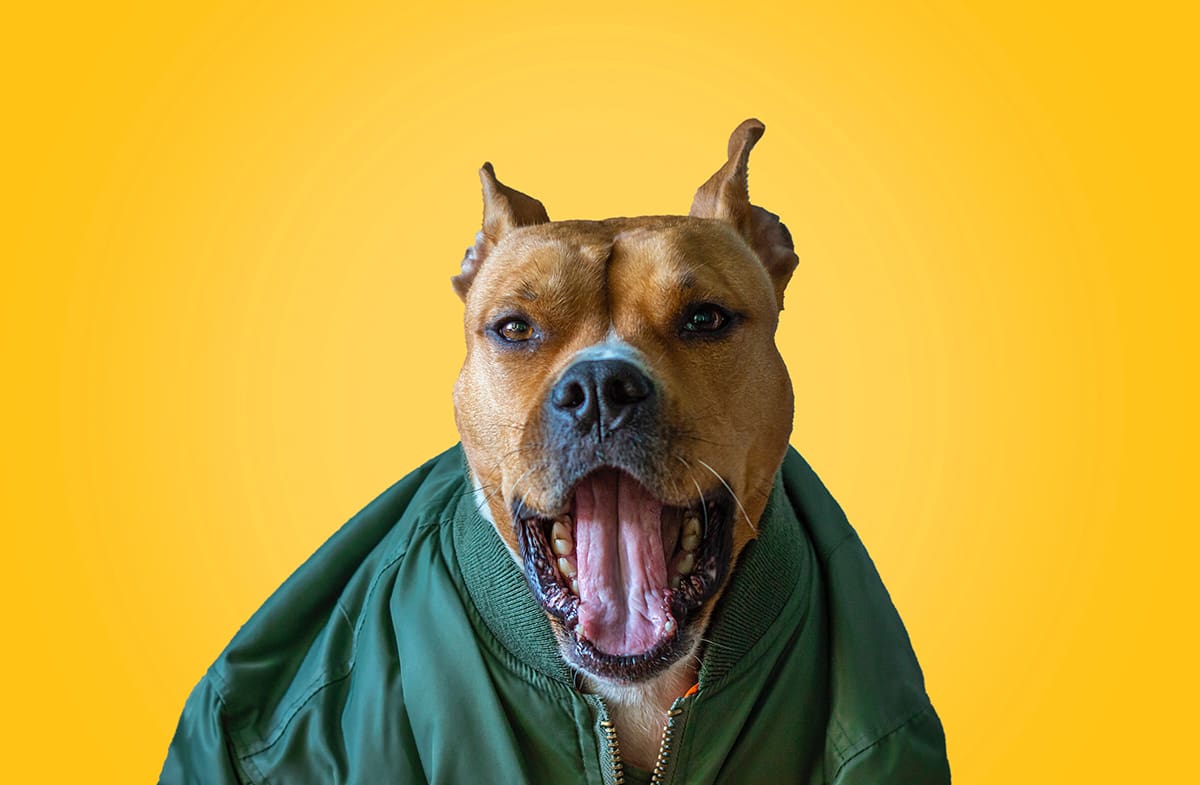
Brushing your dog’s teeth is an important step in maintaining whole body health for your dog. It’s no secret that the bacteria that build up in your pet’s mouth over time cause more than just bad breath, tartar, gingivitis, and damaged teeth. It is also proven to contribute to heart, liver, and kidney problems over time. All of these potential problems are why the best thing that you can do for your dog to prevent these issues is to learn how to brush your dog’s teeth, and do it often.
When brushing your dog’s teeth, there are a few things to keep in mind to make the experience easier for both of you. The first is to be patient. Most dogs find the experience odd to begin with but will get used to the routine over time as long as you keep the conditions calm and pleasant. Think in terms of positive reinforcement. You want to reward cooperation (or even just mild tolerance!). Do not punish a dog who’s wiggling around and just doesn’t get what’s going on. This can end up creating a negative association. Praise them during brushing, and reward them with a healthy treat after you’re done!
This leads us to the second thing to consider: doggy toothpaste. Many dog toothpastes come in a variety of flavors like beef or peanut butter so that your dog enjoys the toothpaste itself! This can be really beneficial when creating a positive association with a new routine. Unlike human toothpastes, they are safe for your pet to swallow. Never substitute human toothpaste for dog toothpaste. Many human toothpastes include the sweetener xylitol, which is highly toxic to pets.
Next, consider your toothbrush options. We recommend starting out with a finger brush to get both you and the dog used to brushing. A finger brush fits over your index finger and has soft, short bristles on it that you will use to gently brush the teeth and gums. You can also find handled brushes that are similar to what humans use but longer and angled. They can take a little more getting used to for most dogs, though.
How to do the actual brushing? Pull back your dog’s lips so you can see the teeth and gums, and gently brush, working your way around to the other side of the mouth. Pay attention to the crevices between teeth, and don’t forget the teeth at the back of the mouth. Don’t worry if you don’t feel like you’re able to do a thorough job initially. Any brushing is better than no brushing! This also gives you a good opportunity to keep a check on the condition of your dog’s teeth and gums.
Now that you’re brushing your dog’s teeth, how often should you do it? Well, ideally, daily. You’d be amazed at what a difference your veterinarian is able to tell over time with patients who get their teeth brushed daily. However, if you aren’t able to do it every day, you can still be very beneficial to your dog’s health by just keeping a regular, frequent schedule.
 The ugly truth is that while most dogs need a professional, veterinary dental cleaning at some point in their lives (these require general anesthesia), dogs who never had their teeth brushed are far more likely to need multiple cleanings, to have infections in the mouth, to require tooth extractions, or to develop major organ diseases because of the damage done by bacteria over time.
The ugly truth is that while most dogs need a professional, veterinary dental cleaning at some point in their lives (these require general anesthesia), dogs who never had their teeth brushed are far more likely to need multiple cleanings, to have infections in the mouth, to require tooth extractions, or to develop major organ diseases because of the damage done by bacteria over time.
If you think your pet may already have symptoms of some of these problems, contact your vet for an exam. Also, check out the AVMA’s list of periodontal disease symptoms.
The good news is that it’s never too late to start!
Cats have the same dental problems that dogs have. Brushing a cat’s teeth can be more challenging, though, as most cat people would rightly guess. Some will tolerate it, others won’t. Feel free to reach out for some tips on keeping your feline’s teeth fresh and clean! We’re cat lovers, too!